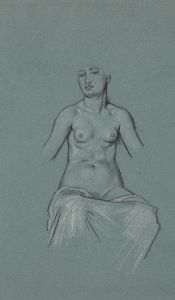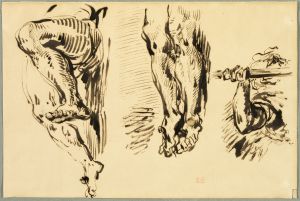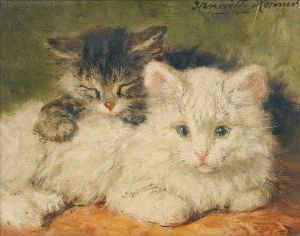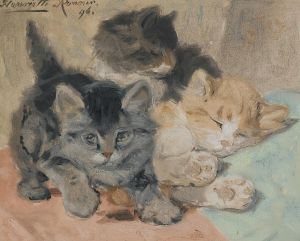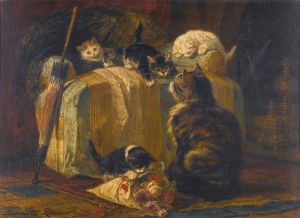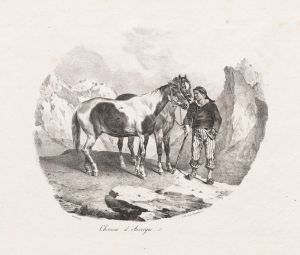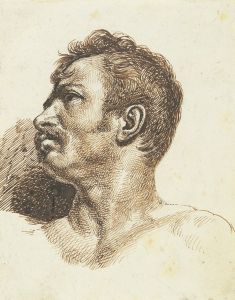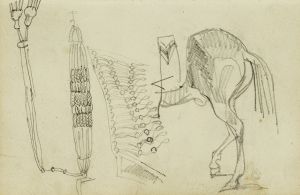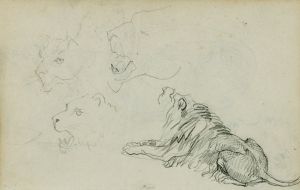
Various studies of lion leg, paws and head
A hand-painted replica of Théodore Géricault’s masterpiece Various studies of lion leg, paws and head, meticulously crafted by professional artists to capture the true essence of the original. Each piece is created with museum-quality canvas and rare mineral pigments, carefully painted by experienced artists with delicate brushstrokes and rich, layered colors to perfectly recreate the texture of the original artwork. Unlike machine-printed reproductions, this hand-painted version brings the painting to life, infused with the artist’s emotions and skill in every stroke. Whether for personal collection or home decoration, it instantly elevates the artistic atmosphere of any space.
Théodore Géricault, a prominent French Romantic painter, is best known for his dynamic compositions and intense studies of human and animal forms. Among his lesser-known works is "Various Studies of Lion Leg, Paws and Head," which showcases his keen interest in anatomy and his dedication to capturing the essence of his subjects through detailed observation.
Géricault was born in 1791 in Rouen, France, and he became a pivotal figure in the Romantic movement. His most famous work, "The Raft of the Medusa," exemplifies his dramatic style and commitment to realism. However, Géricault's oeuvre also includes numerous studies and sketches that reveal his methodical approach to understanding form and movement, particularly in animals.
"Various Studies of Lion Leg, Paws and Head" is a testament to Géricault's fascination with the natural world and his skill in rendering it with precision. Although the exact date of this study is not well-documented, it is believed to have been created during the early 19th century, a period when Géricault was actively exploring themes of power and vitality through animal subjects.
The study consists of several sketches focusing on different parts of a lion's anatomy. Géricault meticulously examines the structure of the lion's leg, the intricate details of its paws, and the formidable features of its head. This work reflects his interest in the physicality and strength of the lion, an animal often associated with majesty and ferocity. By dissecting the lion's form into individual components, Géricault demonstrates his analytical approach to art, which combines scientific observation with artistic expression.
Géricault's studies of animals were not merely academic exercises; they were integral to his artistic process. He often visited menageries and zoos to observe animals firsthand, capturing their movements and characteristics in quick sketches. These studies informed his larger compositions, where animals frequently appeared as symbols of raw emotion and untamed nature.
The lion studies also highlight Géricault's mastery of line and shading. His use of bold, confident strokes conveys the power and grace of the lion, while subtle shading adds depth and dimension to the sketches. This attention to detail and texture is a hallmark of Géricault's style, which seeks to evoke a visceral response from the viewer.
While "Various Studies of Lion Leg, Paws and Head" may not be as widely recognized as some of Géricault's other works, it provides valuable insight into his artistic process and his ability to capture the essence of his subjects. These studies are a reflection of Géricault's broader interest in the human and animal condition, exploring themes of strength, vulnerability, and the primal forces of nature.
In summary, Théodore Géricault's "Various Studies of Lion Leg, Paws and Head" is a compelling example of his dedication to understanding and depicting the natural world. Through careful observation and skilled draftsmanship, Géricault brings the lion to life on paper, offering a glimpse into the mind of an artist who was deeply engaged with the world around him.





